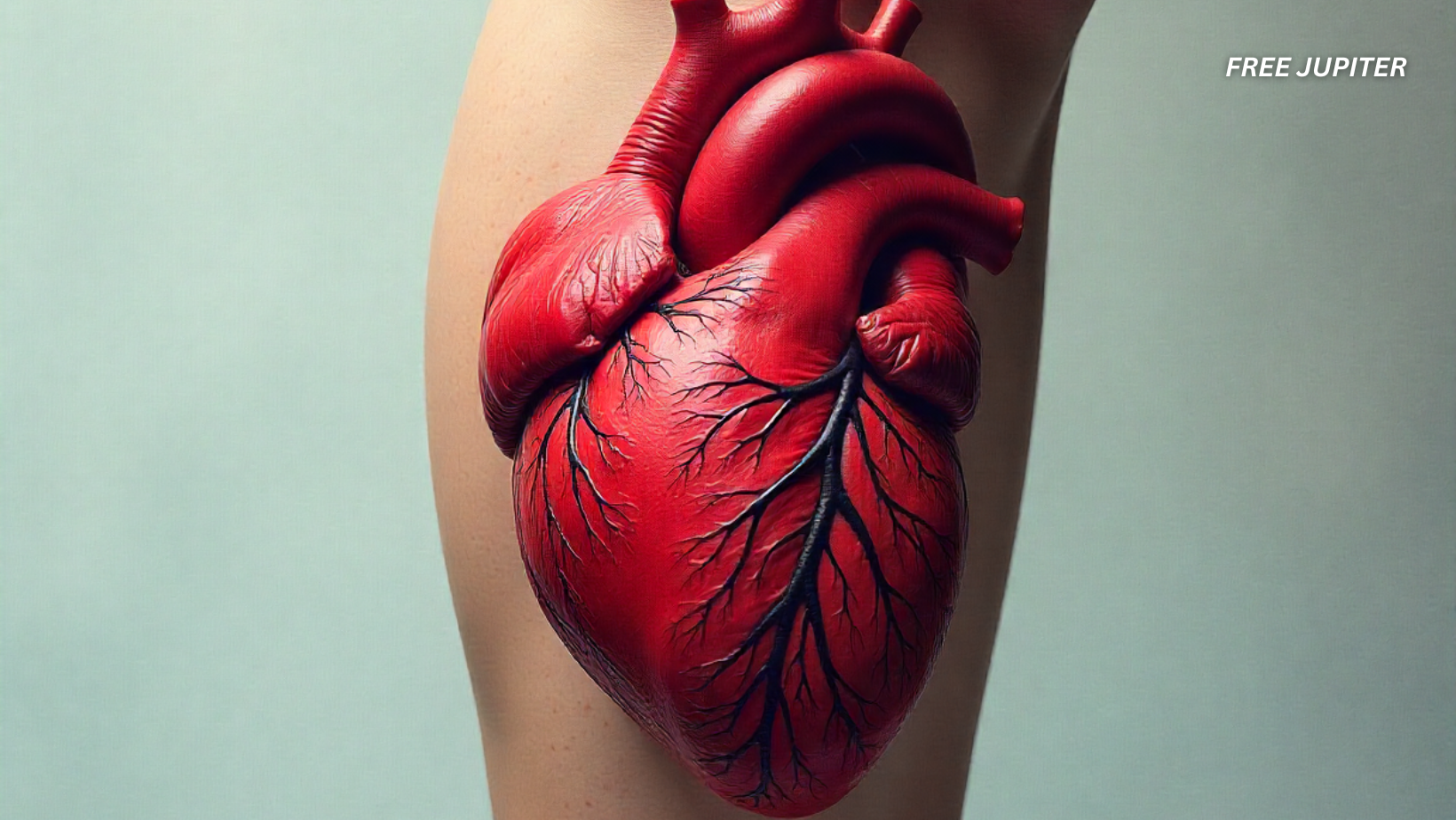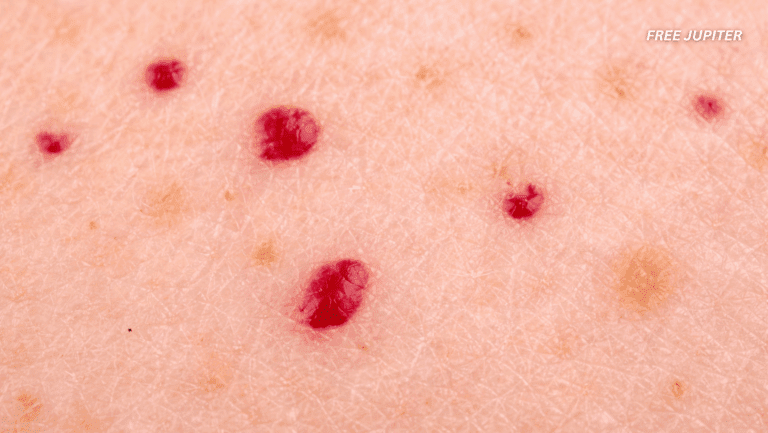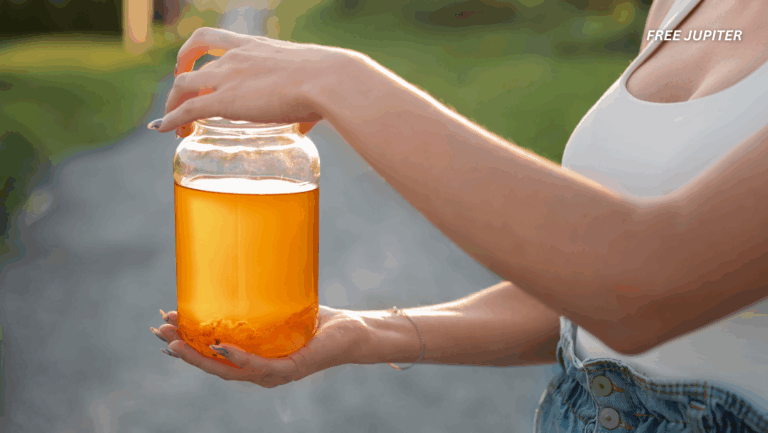Friendly Note: FreeJupiter.com is a place for curious minds and fun discoveries 🌌✨ But we’re a general information site, not a medical guide. Always double-check the facts—and when it comes to your health, check in with a professional too! 💙
We usually think of the heart as a solitary hero, pumping tirelessly to keep us alive. But what if we told you there’s a “second heart” in your body, quietly working alongside the first one—tucked away in your lower legs?
Meet the soleus muscle, an unsung circulatory sidekick living in your calves. It may not thump rhythmically like the heart in your chest, but it plays a crucial supporting role in keeping your blood flowing, especially from your feet and legs back up to your heart. In fact, this muscular pump is so important that scientists and doctors often refer to it as the body’s “peripheral heart.”
Let’s take a closer look at this fascinating system and why keeping your calves active could make a surprising difference to your overall health.
What Exactly Is the Soleus Muscle?
The soleus is a powerful muscle located in the lower part of your leg, just beneath the larger calf muscle (the gastrocnemius). While it doesn’t make the same dramatic shape as its bulging neighbor, it’s built for endurance—and it’s working hard behind the scenes every time you stand or walk.
What makes the soleus unique is its ability to pump blood back toward the heart, especially when you’re upright. It contracts rhythmically during movement, squeezing the veins in your legs and helping move blood upward against gravity. In this way, it supports your cardiovascular system and ensures that blood doesn’t pool in your feet and ankles.
Think of it like a reverse waterfall pump—pulling water uphill when gravity just wants it to stay at the bottom.
Why This Muscle Matters (More Than You Think)
If this calf-pump system isn’t working properly, or if it stays inactive for too long, several problems can arise. When blood stays stagnant in the lower extremities, it creates the perfect conditions for:
- Swelling (also called edema) in the feet and ankles
- Varicose veins, where veins bulge due to chronic blood pooling
- Chronic venous insufficiency, a condition where blood doesn’t return efficiently to the heart
- Deep vein thrombosis (DVT), a dangerous type of blood clot that can develop after long periods of immobility
These issues don’t just affect older adults or people with medical conditions—they can creep up on anyone with a sedentary lifestyle.
So yes, your calves are doing far more than helping you stand on your toes or sprint for the bus. They’re playing a direct role in keeping you alive and well.
Read more: New Study Finds Video Games May Actually Boost Kids’ IQ—Surprising Researchers
When the “Second Heart” Goes Offline
Here’s the tricky part: your calf pump only activates when you move. If you’re sitting for long hours—whether at work, during a road trip, or on a flight—your soleus muscles remain relaxed. Without that rhythmic squeezing, blood flow slows, and gravity wins. Over time, this can lead to the uncomfortable (and sometimes risky) consequences mentioned above.
Even standing still for long periods can be problematic. Retail workers, factory workers, and even teachers often experience aching legs and swelling after shifts—not because they aren’t on their feet, but because they’re not moving around enough.
It’s not the standing or sitting that’s the problem. It’s the lack of movement.
How to Wake Up Your Calf Pump (And Keep It Happy)
The beauty of your “second heart” is that it doesn’t need much to get going. But like any hardworking muscle, it gets sluggish when neglected. The key is to incorporate simple, consistent movement into your day—without needing to overhaul your entire routine.
Whether you’re a busy professional, a frequent traveler, or just someone who finds themselves sitting more than they’d like, here are some easy and surprisingly effective ways to keep your calf muscles engaged and your circulation flowing smoothly:
1. Walk With Purpose (or Even Without It)
The most natural way to activate your calf pump is also the simplest: walking.
Every step you take contracts your calf muscles, helping push blood up your legs. You don’t need to clock 10,000 steps a day (though it doesn’t hurt!). Even a 2-3 minute stroll every hour is enough to get things moving.
Ideas to sneak in short walks:
- Take the long route to the restroom or kitchen.
- Walk while on phone calls—turn your conversations into “walk-and-talks.”
- Set a timer or use a smartwatch that reminds you to stand up every hour.
- Do a lap around the living room during TV commercial breaks.
If you’re in a confined space, like an office cubicle or airplane aisle, even a few short paces back and forth count.
2. Toe Raises: Small Move, Big Impact
When walking isn’t an option, toe raises are your secret weapon.
How to do it:
- While standing or seated, lift your heels off the floor so you’re balanced on the balls of your feet.
- Hold for a second, then slowly lower your heels back down.
- Repeat 10–15 times, several times a day.
This action mimics the contraction of the soleus during walking and helps stimulate blood flow. It’s subtle enough to do at your desk, on a train, or even while brushing your teeth.
Want a challenge? Do them one leg at a time or while holding light weights for extra muscle engagement.
Read more: No Touchscreen. No Paint. No Stereo. Just a $20K American-Made Electric Truck That Works
3. Seated Soleus Pulses (Yes, It’s a Thing)
Newer research has pointed to a special kind of seated movement called soleus pushups or seated calf contractions. It’s basically a micro-workout for your second heart—perfect for those with mobility issues or desk jobs.
Here’s how:
- Sit with feet flat on the ground and knees at 90 degrees.
- Keeping the toes planted, lift your heels up slowly, then lower them back down.
- Do this at a steady, controlled pace for 5–10 minutes if possible.
Even though it seems too gentle to be effective, studies suggest this movement can significantly improve blood sugar regulation and circulation, especially in sedentary people.
4. Elevate and Relax (Gravity Does the Work)
After standing or walking all day, your veins need a break. Elevating your legs above heart level helps blood flow back down naturally, taking pressure off your veins and giving your calf pump a rest.
Try:
- Lying on your back with your legs propped on a stack of pillows.
- Putting your feet up against a wall in a yoga pose called Viparita Karani (a.k.a. Legs-Up-the-Wall).
- Resting your legs on the back of a couch while watching TV.
Even just 15–20 minutes a day in this position can reduce swelling, improve circulation, and ease tension in your legs.
5. Compression Socks: Gentle Squeeze, Big Benefits
Compression socks are like a supportive hug for your veins. They apply light pressure to your lower legs, encouraging blood to move upward more efficiently. They’re especially helpful for:
- People with varicose veins
- Those prone to swelling (e.g., during pregnancy or travel)
- Anyone sitting or standing for long hours
You can find them in varying strengths (measured in mmHg) and styles—from medical-grade stockings to stylish athletic versions. Just be sure to get the right size and fit for your needs.
Real-Life Examples: When Small Changes Make a Big Difference
Let’s say you work a 9-to-5 office job and tend to sit most of the day. You may not notice the effects right away, but over months or years, you might begin to experience heavy legs, swelling, or visible veins. By simply adding hourly mini-walks or setting reminders to do toe raises at your desk, you could drastically reduce the risk of circulation-related issues.
Or imagine a frequent flyer on long-haul international flights. Many travelers wear compression socks and walk the aisles mid-flight to avoid blood clots, especially after stories circulated about people developing economy class syndrome—a term used to describe deep vein thrombosis triggered by prolonged air travel in cramped seating.
In both cases, the fix wasn’t extreme. It was simply about listening to the body’s cues and respecting the power of movement.
Read more: Study Finds 1 in 3 People May Have ‘Misokinesia’
The Takeaway: Movement Is Medicine
Your calves may not get much credit, but they’re doing some heavy lifting behind the scenes—literally. The soleus muscle is one of your best allies for maintaining healthy circulation, and activating it doesn’t require intense workouts or dramatic lifestyle shifts.
If you sit or stand for long hours, take this as your gentle reminder: your second heart needs attention, too. The more you move, the better it performs—and the better you feel.
So go ahead—stand up, stretch, pace around the room. Your calves (and your real heart) will thank you for it.
Disclaimer: The information in this article is for general informational purposes only and is not medical advice. We are not doctors, and this website is run as a family hobby project. Always consult a qualified healthcare professional before making decisions about your health. Please fact-check any claims and use this content as a starting point, not a substitute for professional guidance.










